
PUMPA - SMART LEARNING
எங்கள் ஆசிரியர்களுடன் 1-ஆன்-1 ஆலோசனை நேரத்தைப் பெறுங்கள். டாப்பர் ஆவதற்கு நாங்கள் பயிற்சி அளிப்போம்
Book Free DemoWe shall now find the image's position, size, and nature by drawing the ray diagram for a small linear object placed on the principal axis of a concave mirror at different positions.
Case-I: When the object is placed at infinity, the light rays reaching the concave mirror parallel each other
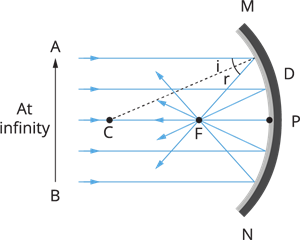
Position of the Image: The image is formed at the principal focus F.
Nature of the Image: It is real, inverted and highly diminished in size.
Case-II: When the object is placed beyond the centre of curvature
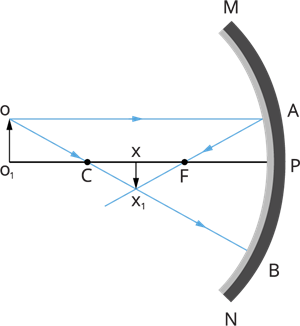
Position of the image: Between the principal focus F and centre of curvature C.
Nature of the image: Real, inverted and smaller than an object.
Nature of the image: Real, inverted and smaller than an object.
Case-III: When the object is placed exactly at the centre of curvature

Position of the image: The image is at the centre of curvature itself.
Nature of the image: It is real, inverted, and the same size as the object.
Case-IV: When the object is placed between the centre of curvature C and principal focus F
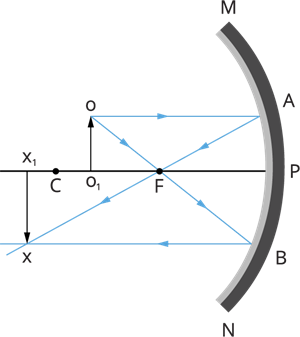
Position of the image: The image is beyond C.
Nature of the image: Real, inverted and magnified.
Case-V: When the object is placed at the principal focus F
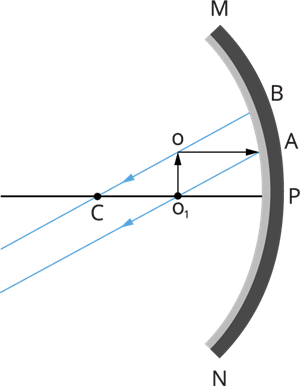
Nature of the image: No image can be captured on the screen, nor any virtual image can be seen.
Case-VI: When the object is placed between the focus F and the pole P
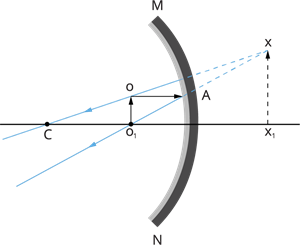
Position of the image: The image is behind the mirror.
Nature of the image: It is virtual, erect and magnified.
Nature of the image: It is virtual, erect and magnified.